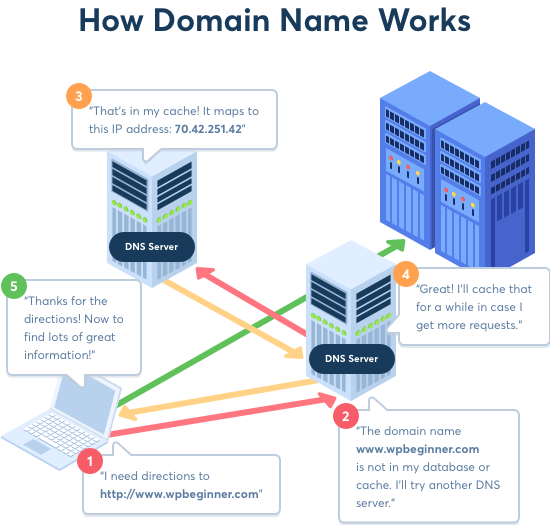What is a Domain Name And How Does It Work?

Domain names are essential for building a website and establishing an online presence in this digital world. Basically, the Domain name is your website’s unique web address and URL locator, making it easy for users to find your website on the internet.
Supposedly, if you plan to create an NZ website, you first require a unique NZ Domain name and a reliable Domain Host for Domain registration.
For a better understanding, let’s learn more about the NZ Domain name and how it works in this article.
What Is A Domain Name?
In simple terms, a Domain is a unique and human-readable name of your website that allows users to locate you online. For example, blog.exmaple.com is a domain that consists of different elements, such as
- Top-Level Domain (TLD): It is the highest level in the domain name hierarchy, representing the purpose or category of the website.
- Second-Level Domain (SLD): The domain name’s main part identifies a specific website or organization.
- Subdomain: An optional section appears before the main domain name.
Here is a table giving an overview of different domains.
| Domain Name | Subdomain | Second-Level Domain (SLD) | Top-Level Domain (TLD) |
| www.example.com | www | example | com |
| blog.example.com | blog | example | com |
| shop.example.net | shop | example | net |
| mail.example.org | example | org |
How Does a Domain Name Work?
- Domain Name Registration
The process begins with registering a domain name from a reliable domain registrar. They will register your desired domain name and record it in a central database if available.
- DNS Hierarchy and Servers
DNS operates a hierarchical structure in which the root server at the top level will maintain the information about authoritative servers for each top-level domain.
- DNS Resolvers
The DNS resolver’s job is to communicate with the authoritative DNS servers on behalf of the user’s browser.
Therefore, when a user types a domain name into a web browser, the browser sends a DNS query to a DNS resolver, which assists in determining the domain name’s associated IP address.
- Recursive DNS Lookup
If resolvers don’t have the IP address in their cache, then recursive DNS lookup will send the query to the root servers, asking for the authoritative server responsible for the TLD of the domain name.
- Authoritative DNS Server and Response
After that, the root server returns the address of the authoritative DNS server for the specified TLD.
The authoritative server provides the IP address associated with the domain name or returns an error message if the domain name does not exist.
- Caching and Response
The IP address is obtained by the resolver from the authoritative server and is stored in its cache for further use and quick response. It then returns the user’s IP address to the browser.
- Establishing a Connection
Finally, with the help of an IP address, the browser hosts the website associated with the domain name. It enables the transfer of data and content between the web server and the user’s browser.
Conclusion
When you buy a domain name, it will open the doors of your website on the internet and help to establish an identity. But, before purchasing a domain, it is essential to understand what a domain name is and what are its different components. Once you get a basic understanding of these matters, you may take a better and more informed decision while purchasing a domain.





